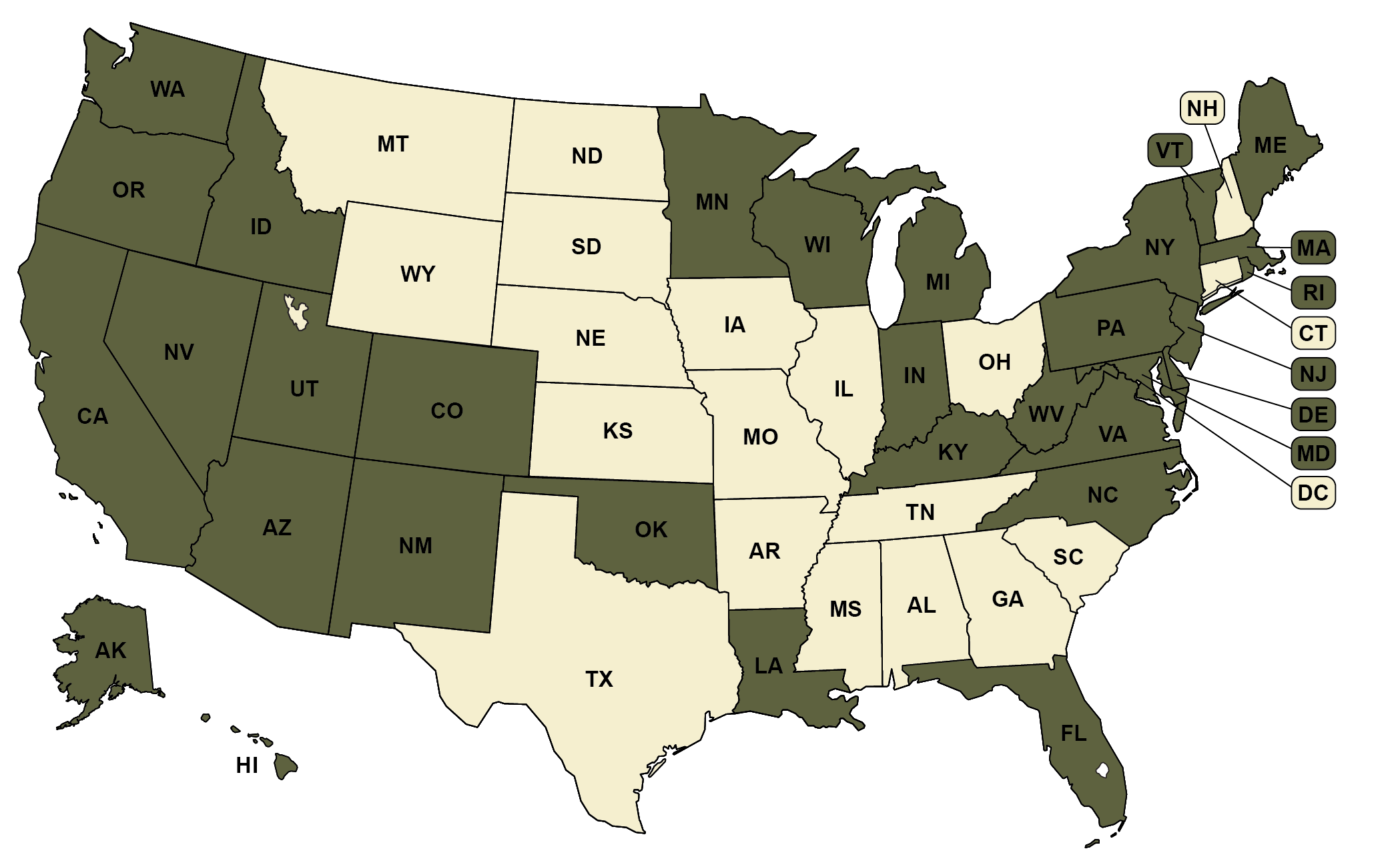Similar to online voter registration, a number of states have recently enacted policies that allow voters to request absentee ballots through an online system. This policy gives voters additional options outside of mailing or submitting paper application forms by hand. These state websites also often allow voters to track their ballots once submitted.
-
State allows voters to apply for absentee ballots online
(31 states)
-
State does not allow voters to apply for absentee ballots online
(19 states + D.C.)
Recommended citation: Movement Advancement Project. "Online Absentee Ballot Application" https://www.mapresearch.org/democracy-maps/online_mail_ballot_application. Accessed [day of access]
Breakdown by Population
*Note: These percentages reflect the voting-eligible population, as reported by the United States Election Project.
67 % of voting-eligible population lives in states that allow voters to apply for absentee ballots online
33 % of voting-eligible population lives in states that do not allow voters to apply for absentee ballots online


